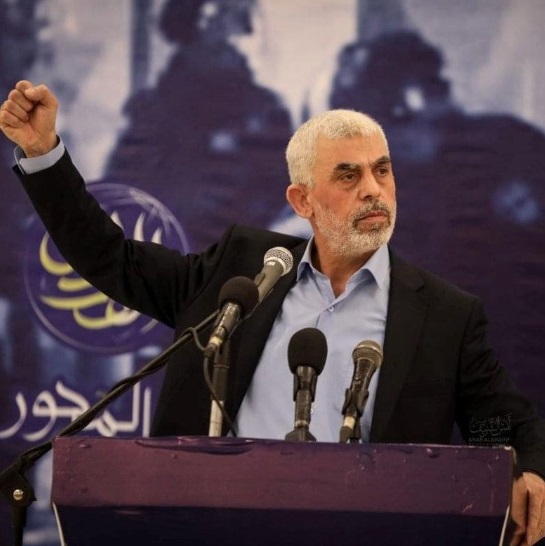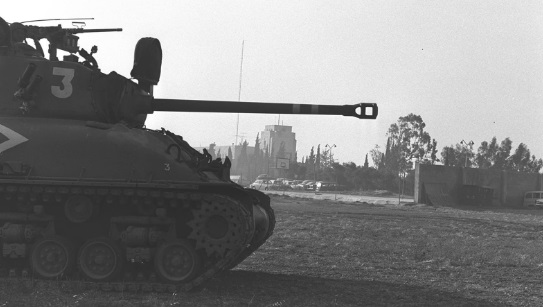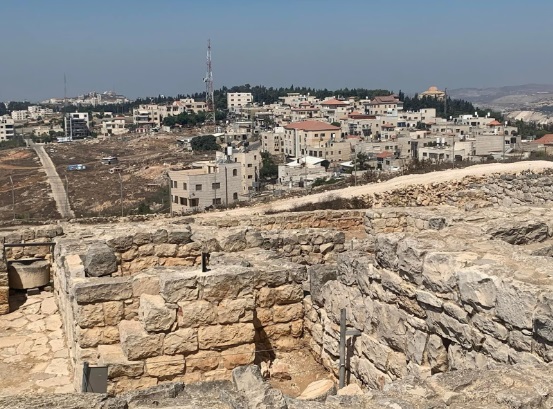Lexicon of the Hamas Organization
Ahmed Yassin

Ahmed Yassin. Credit: “כאן” FB page.
Ahmed Yassin was a prominent Palestinian figure known for his role as the founder and spiritual leader of Hamas, a Palestinian Islamist terrorist organization. This article aims to explore Yassin’s life, his involvement with Hamas, and the complexities of the conflict between Hamas and Israel. It’s important to note that Hamas is designated as a terrorist organization by many countries, including the United States and the European Union, due to its involvement in suicide bombings, rocket attacks, and other forms of violence primarily targeting Israeli civilians.
Early Life and Background
Ahmed Yassin was born in 1937 in Al-Jura, a village near Ashkelon, in what was then Mandatory Palestine. He became a refugee during the 1948 Arab-Israeli War, an event that significantly influenced his worldview. Later, he was paralyzed in a sporting accident, a life-altering event that further shaped his perspectives.
Founding of Hamas
In 1987, amidst the First Intifada, a Palestinian uprising against Israeli occupation, Yassin co-founded Hamas. The organization emerged as an offshoot of the Egyptian Muslim Brotherhood and quickly gained popularity among Palestinians. It was seen as a more militant alternative to the Palestine Liberation Organization (PLO), which at that time was the most prominent voice of the Palestinian resistance.
Ideology and Goals
Ahmed Yassin and Hamas sign in Temple Mount, Jerusalem. Credit: “לך ירושלים” FB page.
Hamas, under Yassin’s spiritual leadership, advocated for the establishment of an Islamic state in the territory of historic Palestine, including what is now Israel. The organization’s charter, penned in 1988, called for the destruction of Israel and was steeped in anti-Semitic rhetoric. Yassin’s views and speeches often reflected this ideology, contributing to his controversial status.
Tactics and Conflict with Israel
Under Yassin’s guidance, Hamas became known for its use of suicide bombings and other forms of asymmetric warfare against Israeli targets. These tactics were part of what Hamas deemed a legitimate resistance against Israeli occupation, but they were widely condemned internationally for targeting civilians.
Yassin argued that these actions were a response to Israeli military actions and policies in the Palestinian territories, including Gaza and the West Bank. The cycle of violence between Hamas and Israel became a defining feature of the conflict, with each side retaliating against the other’s aggressions.
Arrests and Imprisonment
Yassin was arrested by Israeli authorities several times. His first significant imprisonment was in 1989, following the abduction and killing of Israeli soldiers. Released in 1997 as part of a prisoner exchange, he returned to lead Hamas and continued to be a prominent figure in the Israeli-Palestinian conflict.
Assassination and Aftermath
In 2004, Yassin was assassinated in an Israeli airstrike. His death led to widespread mourning in the Palestinian territories and heightened tensions in the region. The assassination was seen as a significant escalation in the Israeli-Palestinian conflict, leading to retaliatory attacks by Hamas and further violence.
Legacy and Controversy
Yassin’s legacy is complex and deeply divisive. To his supporters, he was a freedom fighter and a symbol of resistance against Israeli occupation. To his detractors, he was a terrorist responsible for the deaths of civilians. His role in founding and leading Hamas places him at the center of one of the most intractable and violent conflicts of the modern era.
Conclusion
Ahmed Yassin’s life and his role in founding and leading Hamas are central to understanding the Israeli-Palestinian conflict. His advocacy for the Palestinian cause, coupled with the tactics employed by Hamas under his leadership, continue to evoke strong reactions on all sides of the conflict. The legacy of Yassin and the actions of Hamas remain integral to discussions about peace, violence, and the future of the Israeli-Palestinian relationship.
Lexicon of the Hamas Organization
Yahya Sinwar

Yahya Sinwar. Credit: ‘חדשות 13’ FB page.
Yahya Sinwar’s journey from a refugee camp in Gaza to becoming a key figure in the Israel-Hamas conflict is a story interwoven with tragedy, violence, and political strife. His life reflects the complexities of the Palestinian-Israeli conflict and the role of Hamas in shaping the region’s geopolitics.
Early Life and Education
Born in 1962 in the Khan Yunis refugee camp in Gaza, Sinwar’s early life was set against the backdrop of the aftermath of the 1948 Arab-Israeli War. His family, having fled or been expelled from Al-Majdal Asqalan (Ashkelon), found refuge in the Gaza Strip, then under Egyptian rule. Sinwar’s educational path led him to the Islamic University of Gaza, where he earned a bachelor’s degree in Arabic Studies, a pursuit that would later influence his political career.
Political Activism and Imprisonment
Sinwar’s foray into political activism began with his arrest in 1982 for subversive activities. During his time in Far’a prison, he met other Palestinian activists, cementing his commitment to the Palestinian cause. His activities intensified, leading to his co-founding of Majd, an organization that identified and targeted collaborators with Israel. These actions earned him the nickname “The Butcher of Khan Yunis.” In 1988, Sinwar was arrested for the abduction and killing of two Israeli soldiers and the murder of four Palestinians suspected of collaborating with Israel, leading to his sentencing to four life sentences in 1989. His time in prison was marked by multiple escape attempts and significant health issues, but it was also where he became a prominent figure within the Hamas movement.
Leadership in Hamas

Sinwar. Credit: Elad Gutt’s FB page.
After his release in 2011, as part of a prisoner exchange for IDF soldier Gilad Shalit, Sinwar’s role within Hamas grew. He was elected as the Hamas leader in the Gaza Strip in 2017, taking over from Ismail Haniyeh. His leadership was characterized by a rejection of reconciliation with Israel and an emphasis on militant tactics, including the call for capturing more Israeli soldiers. However, in 2018, Sinwar showed a potential shift in strategy, stating that Hamas would pursue “peaceful, popular resistance,” though his earlier statements suggested a continued commitment to armed struggle against Israel.
Role in the October 7th, 2023 Massacre
Sinwar’s leadership and strategic decisions have had far-reaching consequences. On October 7th, his declaration to “take down the border [with Israel] and tear their hearts from their bodies” materialized in a brutal attack, with Hamas militants targeting towns and communities in southern Israel and the Nova Music Festival. As Hamas’ leader in Gaza and a key figure in its military wing, Sinwar was identified as the mastermind behind these attacks. His actions not only affected the immediate victims but also diverted resources in Gaza towards building terrorist infrastructure, impacting the lives of Gazan civilians as well.
Conclusion
Yahya Sinwar’s life and career embody the tumultuous history and ongoing conflict in the Middle East. From his early days in a refugee camp to his rise as a leader within Hamas, his story is one of radicalization, violence, and political maneuvering. Sinwar’s legacy is marked by controversy, reflecting the broader narrative of the Palestinian struggle and the intricate politics of the Arab-Israeli conflict.
Lexicon of the Hamas Organization
The 1948 Arab Israeli War

Israeli tank at 1948 war. .Credit: Shay Shalom’s FB page.
The West Bank, an area west of the Jordan River in the former British-mandated territory of Palestine, has a complex and multi-layered history that is deeply intertwined with the broader Israeli-Arab conflict.
The 1948 Arab Israeli War, also known as the Israeli War of Independence, was a pivotal moment in the long and complex history of the Middle East. This war, which raged from May 15 to December 10, 1948, shaped not only the borders of Israel but also the trajectory of the Israeli-Arab conflict, which continues to reverberate today.
Historical Background
The roots of the war can be traced back to the late 19th century, when the Zionist movement, seeking to establish a Jewish homeland in Palestine, began gaining momentum. This movement faced opposition from the Arab population of Palestine, who feared losing their land and identity. The British Mandate of Palestine, established after World War I, further complicated the situation, as it attempted to balance the aspirations of both the Jewish and Arab populations.
Armed Forces
Israeli soldiers at 1948 war. Credit: ‘יום בהיסטוריה’ FB page.
The war pitted the newly formed Israeli forces against the combined armies of Egypt, Jordan, Syria, Iraq, and Lebanon. The Israeli forces, though outnumbered and outgunned, were fueled by exceptional motivation and a strong sense of purpose. They were also led by talented commanders like David Ben-Gurion and Yigal Allon.
Political Objectives
The primary objective of the Arab states was to prevent the establishment of a Jewish state in Palestine. They hoped to maintain Arab control over the entire region and to prevent the displacement of Palestinians. For the Israelis, the war was a fight for survival and the realization of their long-cherished dream of a Jewish homeland.
Course of the War
The war can be divided into three main phases. The first phase, lasting from May 15 to June 11, 1948, saw the Arab armies advance into Palestine, capturing several strategic locations. However, the Israelis, through a combination of tactical brilliance and fierce resistance, managed to halt the Arab advance.
The second phase, from June 11 to July 18, 1948, was marked by two UN-brokered truces. During this period, the Israelis used the time to reorganize their forces and acquire additional weapons.
The third and final phase, from July 18 to December 10, 1948, saw the Israelis launch a series of offensives that pushed the Arab armies back. By the end of the war, Israel had control over a larger territory than it had been allocated by the UN Partition Plan, while the Arab states were left defeated and divided.
Aftermath
The 1948 Arab-Israeli War left a lasting legacy on the region. It resulted in the displacement of an estimated 700,000 Palestinians, creating the Palestinian refugee crisis that continues to this day. It also established the borders of the State of Israel, which became a source of further conflict with its Arab neighbors.
Importance of the War
The 1948 Arab-Israeli War was a watershed moment in the Middle East. It marked the birth of the State of Israel and the start of the Israeli-Arab conflict, which continues to shape the region’s politics and security dynamics. The war also had a profound impact on the Palestinian people, who were displaced from their homes and continue to struggle for their own statehood.
Lexicon of the Hamas Organization
The West Bank

Nablus, West Bank. Credit: Cindy Peralez Hughes FB page.
The West Bank, an area west of the Jordan River in the former British-mandated territory of Palestine, has a complex and multi-layered history that is deeply intertwined with the broader Israeli-Arab conflict.
History and Geographical Overview
Originally part of the British Mandate of Palestine (1920-1947), the West Bank’s modern political boundaries emerged after the 1948 Arab-Israeli War. Geographically, it comprises mainly north-south-oriented limestone hills, descending eastward to the Jordan River and the Dead Sea. The area’s diverse terrain influences its agricultural practices and industrial development, which was limited during both the Jordanian and Israeli periods.
Jordanian West Bank (1948-1967)
East Jerusalem. Credit: Tzohar Ethics Center’s FB page.
After the 1948 Arab-Israeli War, Jordan took control of the West Bank, including East Jerusalem. This occupation led to the annexation of the territory by Jordan in 1950, a move recognized by only a few countries. During this period, Jordan made several administrative and political changes to integrate the West Bank into its national framework. The Jericho Conference in December 1948, attended by prominent Palestinian leaders, voted in favor of this annexation.
Political Status and Governance
The West Bank’s current political status is a point of international contention. It is partially administered by the Palestinian National Authority (PNA) in Areas A and B, as defined by the Oslo Accords. Area C, which comprises about 60% of the West Bank, remains under Israeli control. The PNA oversees a number of Palestinian enclaves across these areas, handling civil and, to some extent, security affairs.
Palestinian Governorates
The West Bank is divided into several governorates, each with its own administrative structure. This division is part of the broader administrative framework of the Palestinian authority which includes legislative, executive, and judicial branches, alongside various ministries and diplomatic missions.
Role in the Israeli-Arab Conflict
The West Bank remains a central issue in the Israeli-Palestinian conflict. It’s seen by Palestinians as the heart of their future state, while Israel considers some parts of it, particularly East Jerusalem, as integral to its historical and security interests. The presence of Israeli settlements in the West Bank has been a major point of contention, complicating peace efforts and contributing to ongoing tensions and conflicts in the region.
This overview provides a snapshot of the West Bank’s complex history, political status, and role in the Israeli-Arab conflict. For a more in-depth understanding, the cited sources offer comprehensive details and analyses.
-

 News2 months ago
News2 months agoGaza could Have Been Singapore. Hamas Turned It Into a living nightmare
-

 News2 months ago
News2 months agoRape, slaughter, and atrocities—see the real face of Hamas
-

 News2 months ago
News2 months agoKidnapping elderly and children: Hamas are no heroes
-

 News2 months ago
News2 months agoTrigger warning: This is the atrocity that’s happening in Israel right now
-

 News2 months ago
News2 months agoMonsters: Yahya Sinwar and Hamas kidnapped 150+ children and women.
-

 Hamas War Strategy, Tactics, and PR2 months ago
Hamas War Strategy, Tactics, and PR2 months agoThe War Crimes of Hamas and ISIS in Exploiting Civilians
-

 News2 months ago
News2 months agoShe died while saving lives.
-

 News2 months ago
News2 months agoHamas turns a music festival into a massacre






